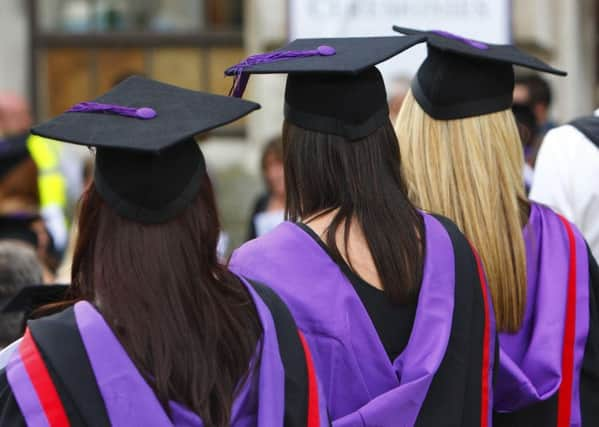Growing gender gap in higher education


Analysis of entry rates of 18-year-olds to 132 higher education institutions across the UK show women were over a third more likely to go to university than men in 2015, up from 27.5 per cent in 2010.
Compared with this, men applying to Oxford were three per cent more likely to attend the university in 2015 than female applicants, while the likelihood of men and women being placed at Cambridge was almost on a par.
Advertisement
Hide AdAdvertisement
Hide AdDr Mark Corver, Ucas’ director of analysis and research said the gap between the number of male and female university entries had reached a “record level”.
There was a 7.7 per cent increase in male applicants placed between 2010 and 2015, compared to a rise of more than 12.5 per cent in female applicants - showing a steadily widening gap.
Women were more likely than men to enter all kinds of universities but were particularly likely to do so in ones with lower entry requirements, the data shows.
Following Ucas’ End of Cycle report in December 2015 which looked at national trends, the findings provide data on individual providers about any differences in representation and offer-making by sex, ethnic group, and area background.
Advertisement
Hide AdAdvertisement
Hide AdThe admissions body believes it is “the largest data resource published for universities” of its kind in the country.
The sets take into consideration applicants’ predicted grades and competitiveness of the course applied for - two strong factors affecting how likely an applicant is to receive an offer.
Other key findings revealed that the difference in entry rates between white and other ethnic groups is widening, whereas the gap between those from the most disadvantaged and well-off areas of the UK is getting smaller.
The entry rates of the white ethnic group had the slowest year-on-year growth, with white students now under-represented at just under half of the 130-plus universities.
Advertisement
Hide AdAdvertisement
Hide AdHowever the figures also show a noticeably lower entry rate for black people to universities which required higher grades.
Professor Les Ebdon, director of fair access to higher education, said the data was a “real step forward for widening access”.
“Some universities will clearly be very challenged by this data, and I expect them to work hard to understand the discrepancies between applications and offers made for certain groups.”
The findings are available on the Ucas website.